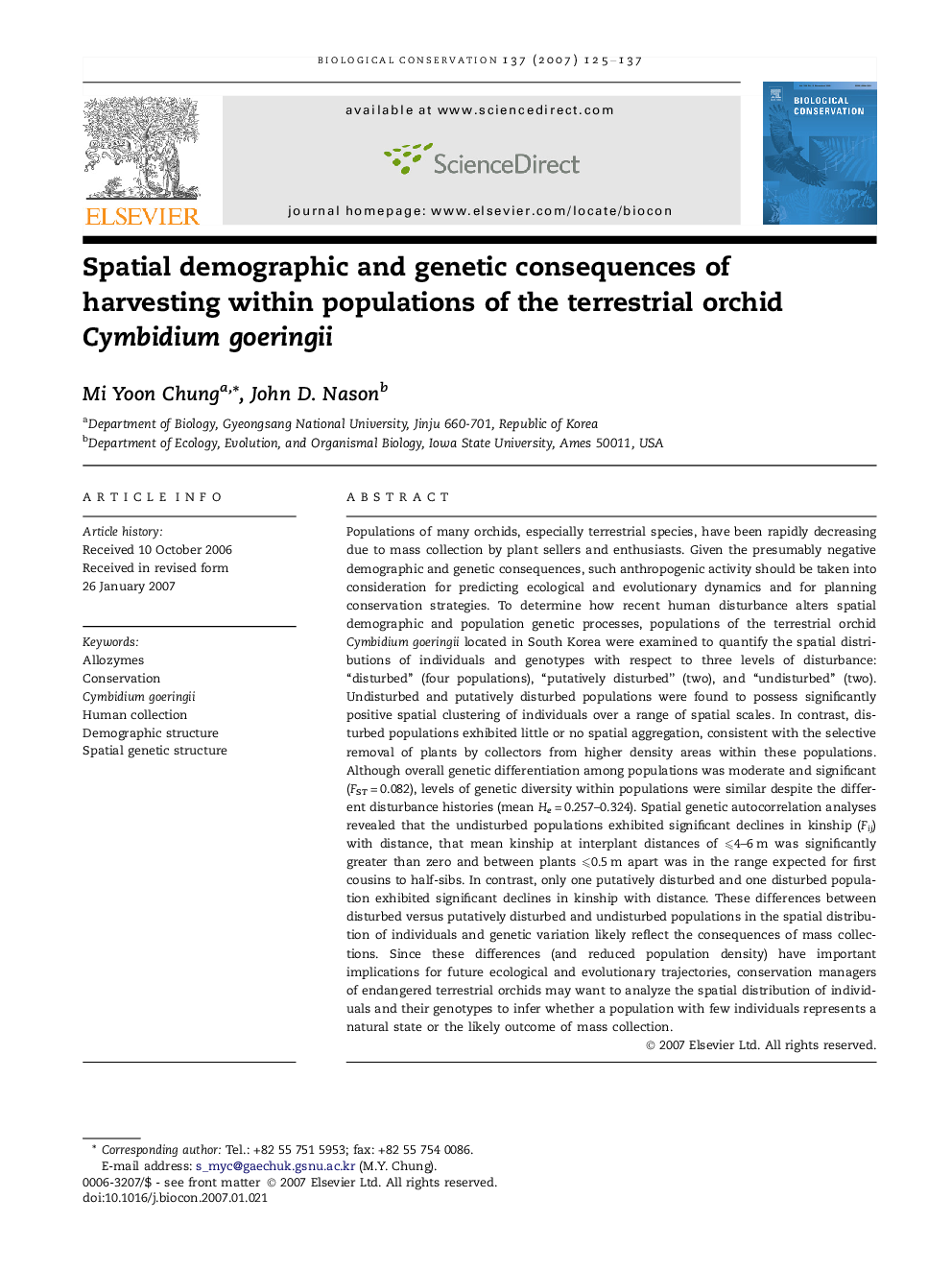| کد مقاله | کد نشریه | سال انتشار | مقاله انگلیسی | نسخه تمام متن |
|---|---|---|---|---|
| 4387500 | 1304609 | 2007 | 13 صفحه PDF | دانلود رایگان |

Populations of many orchids, especially terrestrial species, have been rapidly decreasing due to mass collection by plant sellers and enthusiasts. Given the presumably negative demographic and genetic consequences, such anthropogenic activity should be taken into consideration for predicting ecological and evolutionary dynamics and for planning conservation strategies. To determine how recent human disturbance alters spatial demographic and population genetic processes, populations of the terrestrial orchid Cymbidium goeringii located in South Korea were examined to quantify the spatial distributions of individuals and genotypes with respect to three levels of disturbance: “disturbed” (four populations), “putatively disturbed” (two), and “undisturbed” (two). Undisturbed and putatively disturbed populations were found to possess significantly positive spatial clustering of individuals over a range of spatial scales. In contrast, disturbed populations exhibited little or no spatial aggregation, consistent with the selective removal of plants by collectors from higher density areas within these populations. Although overall genetic differentiation among populations was moderate and significant (FST = 0.082), levels of genetic diversity within populations were similar despite the different disturbance histories (mean He = 0.257–0.324). Spatial genetic autocorrelation analyses revealed that the undisturbed populations exhibited significant declines in kinship (Fij) with distance, that mean kinship at interplant distances of ⩽4–6 m was significantly greater than zero and between plants ⩽0.5 m apart was in the range expected for first cousins to half-sibs. In contrast, only one putatively disturbed and one disturbed population exhibited significant declines in kinship with distance. These differences between disturbed versus putatively disturbed and undisturbed populations in the spatial distribution of individuals and genetic variation likely reflect the consequences of mass collections. Since these differences (and reduced population density) have important implications for future ecological and evolutionary trajectories, conservation managers of endangered terrestrial orchids may want to analyze the spatial distribution of individuals and their genotypes to infer whether a population with few individuals represents a natural state or the likely outcome of mass collection.
Journal: Biological Conservation - Volume 137, Issue 1, June 2007, Pages 125–137